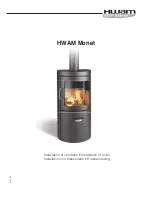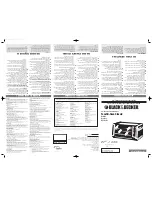
4
Set-up and installation
Installation and maintenance instructions
21
Daikin Altherma EHS(X/H)
Daikin Altherma integrated solar unit
008.1444099_00 – 07/2018 – EN
Fig. 4-27
Fix the hydraulic block in place when connecting to the
top (left) or to the rear (right)
3
Establish hydraulic connections on the Daikin Altherma EHS(X/
H).
▪ Refer to
for the position of the heater connections.
▪
Observe specified tightening torque (see
▪ Install the line in such a way that the protective cover of the
Daikin Altherma EHS(X/H) is simple to put on after assembly.
▪ Connect the water for filling or refilling the heating system as
specified by EN 1717/EN 61770 to avoid contamination of
drinking water by return flow.
4
For rearward facing connections
: Support hydraulic lines suit-
ably according to the spatial conditions.
Fig. 4-28
Connection to the rear: Support hydraulic lines
5
Connect the blow-off line to the safety over-pressure valve and
diaphragm expansion vessel in accordance with EN 12828.
▪ Any steam or heating water which may escape must be drained
by a suitable blow-off line with constant gradient in a frost-pro-
tected, safe and observable manner.
▪ Install the line in such a way that the protective cover of the
Daikin Altherma EHS(X/H) is simple to put on after assembly.
▪ Check the seat of the drain hose on the safety pressure relief
valve. If necessary, connect and install a separate hose.
6
Connecting a diaphragm expansion vessel.
▪ Connect a suitably dimensioned and preset diaphragm expan-
sion vessel for the heating system. There may not be any hy-
draulic blocking elements between the heat generator and the
safety valve.
▪ Position the diaphragm expansion vessel in an easily access-
ible place (maintenance, parts replacement).
7
Carefully insulate pipework against heat loss and to avoid con-
densation (insulation thickness at least 20 mm).
–
Water shortage protection:
The pressure and temperature
monitoring of the controller shuts off and locks the Daikin
Altherma EHS(X/H) safely if there is a shortage of water. No
additional water shortage protection is needed in the con-
struction.
–
Avoid damage caused by deposits and corrosion:
see
Fig. 4-29
Connecting a diaphragm expansion vessel
4.6.2
Connecting the drain
1
Connect the drain hose to the hose connecting piece for the
safety overflow (
–
Use transparent drain hose (draining water must be visible).
–
Connect the drain hose to an adequately dimensioned waste
water installation.
–
Drain should not be lockable.
Fig. 4-30
Connection of the overflow hose
















































